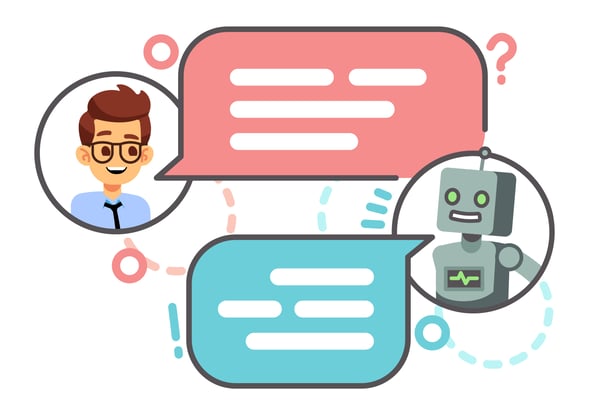Believe it or not, conversational marketing is not about those water-cooler moments in the marketing department. Nor is it about chatting about the weather to your customers before you make a sales pitch. Conversational marketing is one of the year’s hottest new trends – it’s a one-to-one approach that companies use to shorten their sales cycles and learn about their customers by creating a genuine connection. So how exactly do you achieve that?

In today’s fast-paced world people don’t have the time or patience for long conversations on the telephone or even face-to-face. This is why live chats on websites have taken over. You may have noticed those chat boxes that pop up when you’re scrolling through a website. They were strange at first and most of us wanted to close them as quickly as possible, but in the last few months more and more people are recognising them as a heaven-sent aid.
If you’re in a hurry to find out a bit of information you simply type in a question and, via the chat box, a real customer support person will offer an answer or arrange a callback. These chats can make the difference between converting a lead or losing it to a more agile competitor. This is because people’s attention span is short and their patience is low when browsing online – if they don’t find the information they want in seconds, visitors are likely to fly away to the next website.
A real person offering answers via a chat box may be novel but it doesn’t feel particularly unusual. How would you feel though, if it was a robot at the other end of the chat? Many companies now use the ‘services’ of chatbots for at least some of their conversational marketing needs. As the name suggests, chatbots are robots (automated software) designed to respond automatically to the messages and queries they receive.
Chatbots can be pre-programmed to answer the same way every time or to provide different answers depending on the keywords they detect in the user’s question. They can be found on social media pages, company websites and even in SMS messaging systems.
If programmed correctly, they are an extremely useful tool for your customers – they can generate leads and increase revenue. A good chatbot will save you time and money by automatically selecting qualified leads and putting them through to your sales team. They are also extremely useful in alleviating employee fatigue caused by answering the same questions over and over. Another important benefit for using chatbots is that they are operational even out of business hours; customers can ask questions and find the answers they need any time of day or night.
In terms of content, chatbots are only as effective as the number of questions they can correctly answer – so if their scope is too limited they become a little irritating and time-wasting! Taking the time to think about most frequently asked questions and coming up with comprehensive content that answers will pay dividends when leaving a chatbot in charge. Bottom line, by endowing your bot with a personality you humanize them and bring them closer to the voice of your brand. A trend of the future no doubt, will be chatbots with different personalities that can be given multiple ‘voices’ and conversational styles.
Right now, however, 2019 has only just begun and we believe lots of new marketing trends will become mainstream as we circle around the sun once more. So if you’d like to peek into the future and be the first to know, why not download our Marketing Trends for 2019 eBook? It’s completely free and it’s packed with insights for the savvy marketeer.
